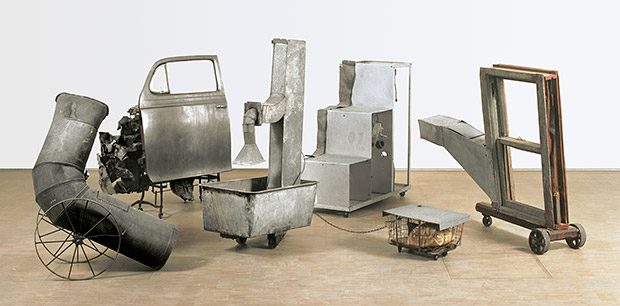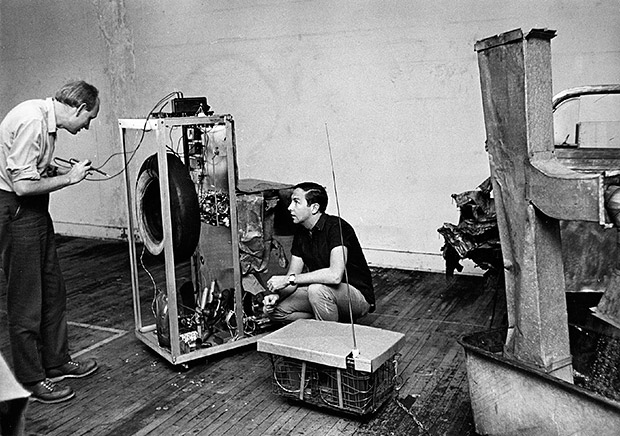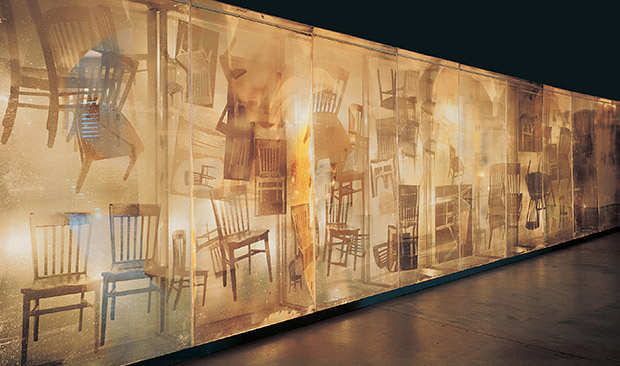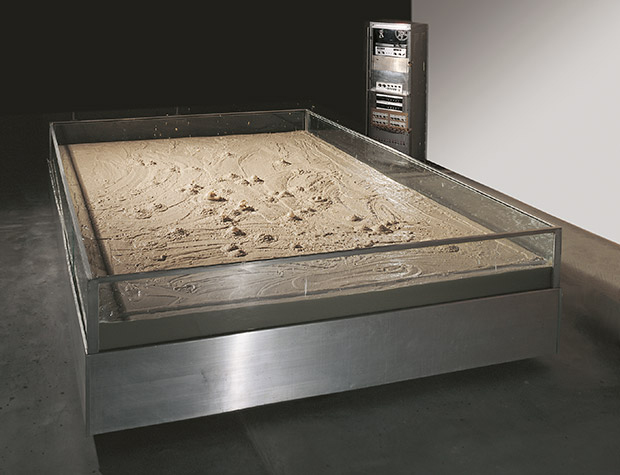
When Robert Rauschenberg met Jean Tinguely
How Tinguely's use of tech inspired Rauschenberg in fulfilling his dream of a constantly changing work of art
One of the most impressive stands at Frieze Masters last week was Hauser & Wirth's dedicated to the mechanical sculptures of Jean Tinguely.
It couldn't help but remind us of the meeting between the Swiss artist and Robert Rauschenberg, detailed in our Rauschenberg Focus book, that lit the American artist's enthusiasm for technology as a way of expanding the possibilities of his art. As today is the anniversary of Rauschenberg's birth (he was born in 1925 and died in May 2008), we thought we'd take the opportunity to share the story.
In 1960, Rauschenberg met Tinguely, who had been invited to New York to create a work of art (his self-destroying mechanical assemblage Hommage à New York) in the garden of The Museum of Modern Art. Tinguely was being helped with the technical challenges of creating Hommage by a Bell Labs engineer, Billy Klüver. He and Rauschenberg became friends – a friendship that would be instrumental to the latter’s engagement with technology.
Technology appealed to Rauschenberg as a way of fulfilling his dream of a constantly changing work of art. He had pursued this goal from the White Paintings through the Combines, and Oracle, his first collaboration with Klüver, might well be considered his last Combine. Consisting of five freestanding components – including a car door attached to a typewriter table and a ventilation duct joined to a window frame – Oracle also had five hidden remote-controlled radios that constantly scanned the frequency spectrum to produce random sounds.

Other Rauschenberg technological works incorporated sound as a counterpart to visual experience. In Soundings, multiple photographs of a chair silkscreened on an expanse of mirrored Plexiglas become visible only when viewers created noise to activate the lights illuminating the work from within. Sound also played a defining role in Mud Muse, in which a large vat of a mudlike substance begins to bubble when a pre-recorded sound track activates a pneumatic air system. Other projects saw Rauschenberg working with neon and creating the Revolvers (1967), sculptures whose compositions could be altered with the flip of a switch.

In the autumn of 1966, Rauschenberg, Klüver, Robert Whitman and Fred Waldhauer founded Experiments in Art and Technology (EAT) to bring together artists and engineers for the creation of works of art conceived in relation to technological possibilities. At about the same time, Rauschenberg joined his interest in technology with his involvement in performance by participating in ‘Nine Evenings: Theatre and Engineering’. In this series of performances, artists, engineers and scientists collaborated on technologically orientated pieces.

Despite Rauschenberg’s enthusiasm for the possibilities of technology, its use reinforced rather than challenged the way he made art, literalizing aspects of his pre-existing practice. Critics pointed out that such works’ changing components can change only to a limited degree and that none of them offers a truly open and variable experience to the viewer. Nonetheless, Rauschenberg’s involvement with technology would remain a lifelong element of his work. This era of optimistic experimentation has since encouraged artists to use varied forms of technology in their art.
If you'd like to know more about one of the most prolific and innovative artists of the post-war period and how his diverse range of work has had a profound influence on avant-garde art from the 1950s onwards our Robert Rauschenberg Focus book is a great place to start learning more.